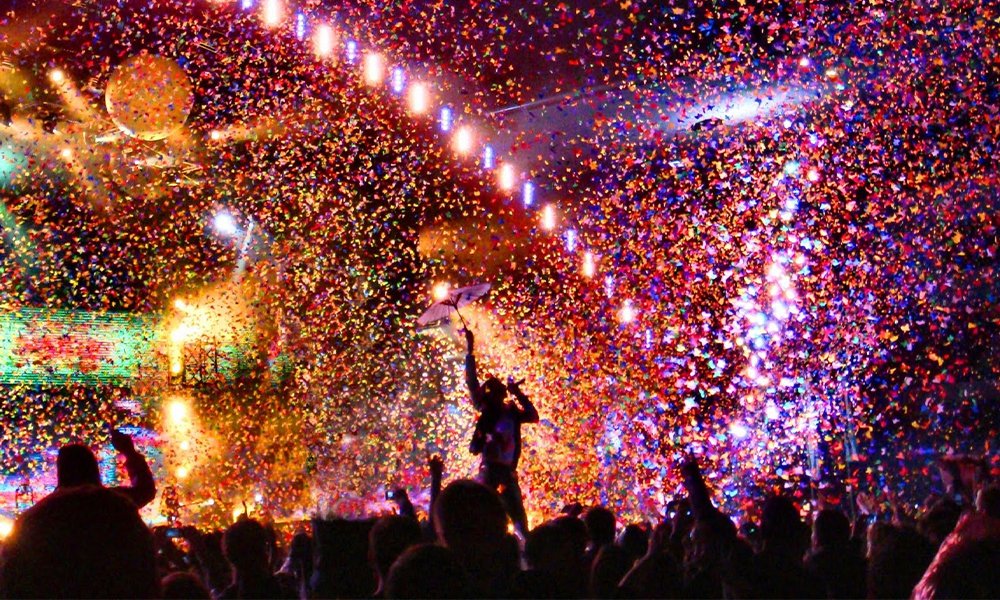Live entertainment has always been a major part of our lives, bringing people together to share experiences in music, theater, sports and more. In recent years, live events have undergone major changes, particularly with the influence of technology and the global pandemic. With concerts, festivals and other events coming back stronger than ever, the future of live entertainment looks bright – and it’s evolving in exciting ways. Let’s take a look at what the future might hold for live entertainment and the trends shaping the field.
The Impact of Technology on Live Entertainment
Technology has always had a major impact on entertainment and in recent years has really changed the way we experience live events.
Virtual Reality (VR) and Augmented Reality (AR): VR and AR are changing the way people interact with live entertainment. Imagine wearing VR goggles and feeling like you’re in the front row of a concert, even when you’re at home. Companies are using VR to make concerts more accessible, allowing fans from all over the world to “attend” events without leaving their homes. AR, on the other hand, adds an extra layer to real-world experiences. For example, AR effects can appear on your phone when you point it at a stage, making a concert feel even more immersive.
Live streaming: The COVID-19 pandemic popularized live streaming for artists and performers. Platforms like YouTube, Instagram, and Twitch became virtual stages where artists could engage with fans in real time. Even when in-person events return, live streaming is here to stay, providing fans another way to enjoy concerts and shows. Many artists are now streaming their performances for fans who can’t attend in person, making live entertainment more inclusive and global.
Interactive technology: New technologies are making concerts more interactive. Apps can let fans vote on songs they want to hear, share reactions in real time, or participate in visual effects that appear on stage. This level of engagement creates a personalized experience that keeps fans coming back.

Hybrid Events: The Best of Both Worlds
Hybrid events combine live and virtual experiences. They became popular during the pandemic and are now paving the way for the future. At a hybrid event, there is a live audience on site, but the event is also streamed online for a virtual audience. This setup gives fans more ways to participate, whether they prefer the energy of an in-person event or the comfort of watching from home.
Hybrid events have also opened up new opportunities for artists. They can reach larger audiences, sell more tickets, and engage with fans in creative ways. This model benefits festivals, sporting events, and concerts, and is likely to become a permanent part of the live entertainment landscape.
Personalization: Tailored Experiences for Fans
With more data and technology, event organizers can now tailor experiences specifically for their audiences. Here are some ways this happens:
Customized playlists and recommendations: Before an event, fans may receive playlists or song recommendations based on their preferences. This can help them familiarize themselves with an artist’s music or get in the mood for the concert.
Personalized merchandise: Some concerts now offer personalized merchandise, like t-shirts with your name or the lyrics of your favorite songs. Fans love these special, one-of-a-kind items that make the experience even more unique.
Exclusive content: Some artists offer superfans early access to tickets, virtual meet-and-greets, or exclusive behind-the-scenes content. Personalized content creates a stronger connection between the artist and their audience and makes fans feel valued.
Sustainable events: Becoming more environmentally conscious
As people become more environmentally conscious, the entertainment industry is also moving toward more sustainable practices. Festivals and concerts often leave a large carbon footprint, so event organizers are now looking for ways to make events more environmentally friendly.
Less plastic consumption: Many festivals reduce single-use plastic consumption. They encourage visitors to bring their own reusable bottles and cups, or offer biodegradable options for food anddrinks.

Green transportation: Some events now encourage carpooling, biking, or public transportation. Larger festivals may even offer shuttle buses to reduce the number of cars on the road.
Green energy: Many event organizers are switching to renewable energy sources to power their events. Solar panels, wind energy, and battery-powered stages are becoming more common at outdoor festivals.
By taking these steps, event organizers show they care about the planet and their fans, and in turn, create more responsible and sustainable live entertainment. Enhanced Safety Measures: Keeping Fans Safe
After the pandemic, health and safety became a top priority at large events. Event organizers are now using enhanced safety measures to ensure a safe environment for all attendees.
Contactless Entry and Payments: More venues are adopting contactless technology for entry and ticket purchasing. Fans can use mobile tickets and pay for food or merchandise with their phones, reducing physical contact and speeding up queues.
Health Screening and Disinfection: Some events may require health screenings or temperature checks at entry points. Hand sanitizer stations and regular cleaning routines are also becoming standard for larger gatherings.
Crowd Control with AI: Artificial intelligence (AI) helps manage crowd flow and predict potential bottlenecks. AI allows event organizers to monitor crowd density in real time, allowing them to make quick adjustments and prevent overcrowding.
These safety measures give fans peace of mind and make live events more enjoyable and stress-free.
The Rise of Smaller, Intimate Concerts and Festivals
While large concerts and festivals will always be popular, there is a growing trend toward smaller, more intimate events. Fans are increasingly interested in unique experiences where they can feel closer to the artists and the action. Here are some reasons why these small events are catching on:
Unique venues: Instead of large stadiums, some artists are now performing in smaller venues like art galleries, warehouses, or rooftops, creating a unique atmosphere that further enhances the experience.

Closer interaction with artists: At a small concert, fans can enjoy a more personal connection with the artist. This setup allows artists to interact directly with their audience and create memorable interactions.
Exclusive feeling: Limited capacity events feel special and give fans bragging rights and the feeling of being part of something exclusive. Smaller events often sell out quickly, adding to the excitement.
As fans seek these more personal experiences, we can expect to see more artists hosting small, intimate events alongside their large concerts.
The Future of Festivals: More Than Just Music
Festivals have become cultural experiences that go beyond just music. Organizers are adding elements like art installations, wellness workshops, and food markets to attract a diverse audience.
Art and immersive installations: Festivals now include interactive art installations that fans can explore and interact with. These installations enrich the experience and create a fun atmosphere for photos and memories.
Wellness and mindfulness activities: Many festivals now offer yoga sessions, meditation areas, and mental health workshops. This trend reflects the growing awareness of wellness and self-care, especially among younger audiences.
Diversity in food and drink: Gourmet food trucks, vegan options, and international cuisine have become a staple at festivals. Instead of traditional fast food, fans can now enjoy a wide variety of high-quality options, enriching the overall experience.
What's next for live entertainment?
The future of live entertainment is bright, with technology, sustainability and personalization shaping new trends. As we look to the future, we can expect live events to become even more immersive and accessible. Here’s a quick summary of what’s next:
Hybrid events: Combining physical and virtual experiences to bring concerts and festivals to a global audience.
Interactive and personalized experiences: Using technology to engage fans and make events more memorable.
Sustainability efforts: Environmentally friendly practices are becoming the norm at festivals and concerts.
Smaller, intimate gatherings: More artists are offering exclusive, limited-capacity events for a unique fan experience.
Live entertainment is evolving to meet changing fan tastes while embracing technology and sustainability. Whether you’re at a massive festival or an intimate concert, the future offers countless ways to enjoy unforgettable live experiences. So, if you are looking forward to your next event, get ready to see how these exciting trends will make it even moremake you more forgetful.




No Comment! Be the first one.